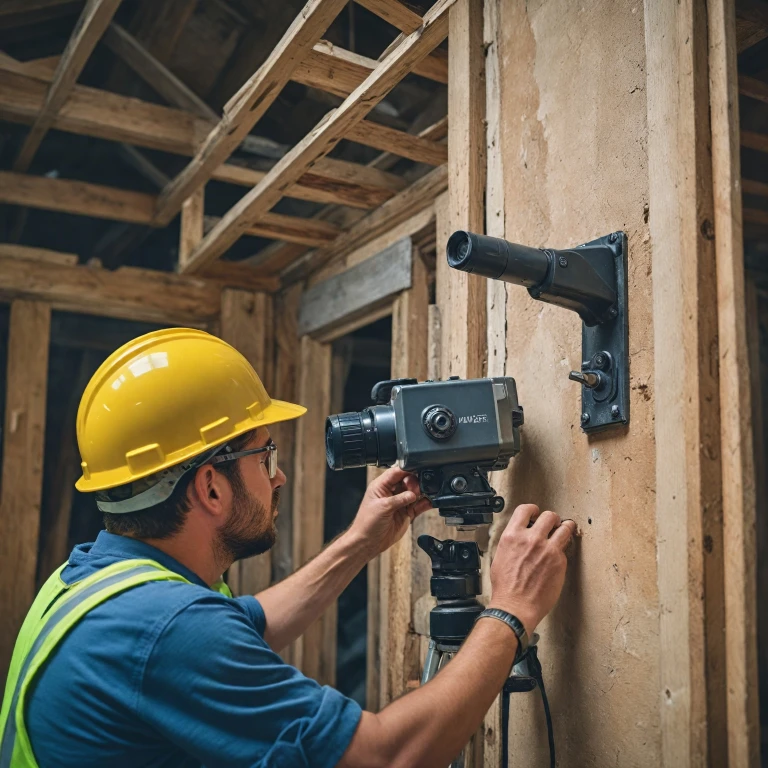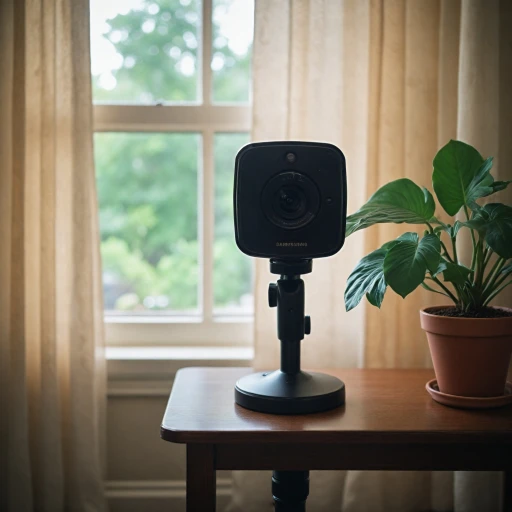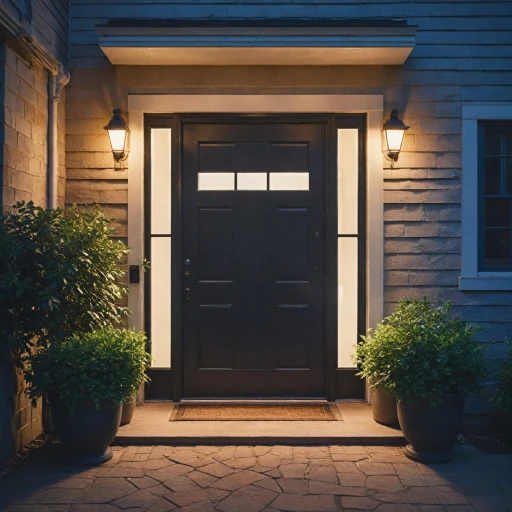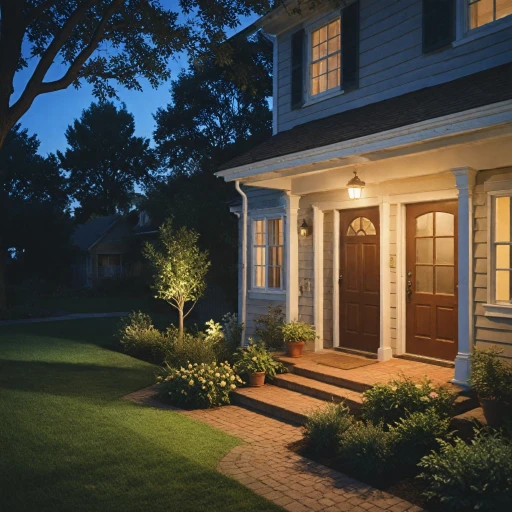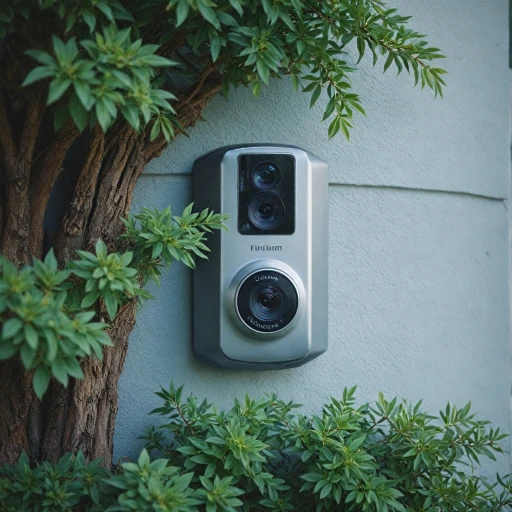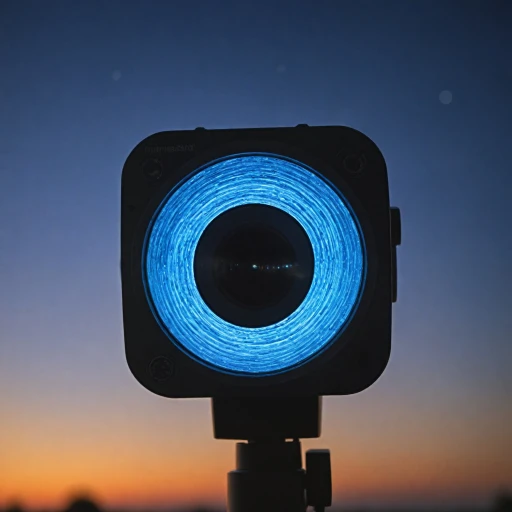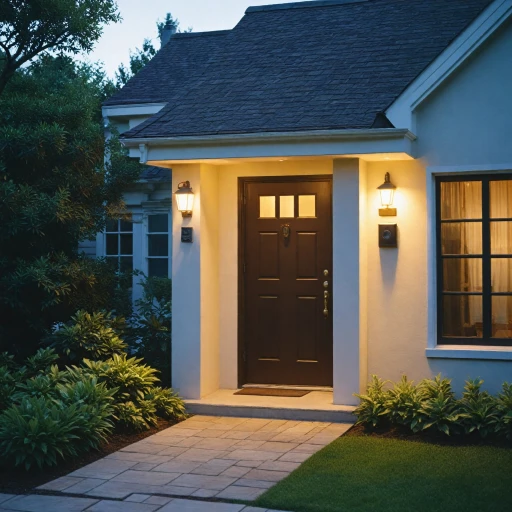Understanding Your Ring Camera
When considering enhancing your home security, a Ring camera can be a valuable addition. These devices offer a variety of features, from video doorbells like the Ring Video Doorbell Pro to battery-powered options like the Stick Up Cam. Understanding the different models available is crucial before installation, as they cater to various needs and setups.
Exploring Ring Camera Models
Ring offers a range of security cameras designed to suit different environments and preferences:
- Video Doorbells: Ideal for monitoring visitors at your front door. Options include wired models like the Ring Doorbell Pro and battery-powered variants.
- Stick Up Cam: Versatile and can be used inside or outside your home, available in both wired and battery versions.
- Floodlight and Spotlight Cams: Perfect for outdoor areas, they combine lighting with camera functionality for improved security.
Key Features to Consider
Before installing your new Ring device, familiarize yourself with its core features:
- Video Quality: High-definition video ensures clear images, crucial for identifying details.
- App Integration: The Ring app lets you manage and view your camera feed remotely, essential for real-time updates.
- Two-Way Talk: Communicate with visitors through the camera, a handy feature for Ring Doorbell users.
- Power Source: Decide between battery or wired options based on your preference and location flexibility.
Setting Up Your Ring Account
To get started, create a Ring Account through the official app, which you’ll use to control all Ring devices. This step paves the way for a seamless installation and ensures your cameras are ready to protect your home.
With a clearer understanding of Ring devices' alternatives, you can make an informed decision that best fits your home security needs. Choosing the right model based on your specific requirements will ensure optimal performance, supporting a reliable security setup.
Choosing the Perfect Location
Selecting the Best Spot for Your Ring Camera
Choosing the right location for your Ring camera is crucial to ensure maximum coverage and effectiveness of your security system. Whether it’s a video doorbell or a floodlight cam, strategic placement can make all the difference. Consider these helpful tips:
- Entry Points: Position cameras near main entrances or access points like front and back doors. This is where a Ring doorbell or a spotlight cam can be particularly useful to capture anyone coming or going.
- Height Considerations: Install devices at a height of 8-10 feet off the ground. This ensures a wide view while being out of the reach of potential tamperers.
- Field of View: Make sure there are no obstructions like walls or decorative elements blocking the camera's view. The field of view should cover as much area as possible.
- Lighting: Place your camera where there's adequate lighting, especially at night. Floodlight cams are excellent because they illuminate dark areas effectively.
- Wi-Fi Signal: Be sure to install your device in an area with a strong Wi-Fi connection to avoid video lag or connectivity issues.
- Weather Protection: While all Ring devices are weatherproof, consider placing them under a roof or eave to extend their lifespan.
Each location decision should be considered carefully before installation to ensure that once installed, the Ring device is operating at its best. For more on camera behavior, you can learn about understanding the red light on your Ring camera in related resources.
Gathering Necessary Tools and Equipment
Gathering Tools and Equipment You’ll Need
Once you've identified the optimal location for your Ring camera, it’s essential to gather all necessary tools and equipment before beginning the installation process. Having everything on hand ensures a smooth setup and reduces the hassle of searching for tools mid-installation.
- Camera and Accessories: Ensure you have the Ring device, whether it's a video doorbell, floodlight cam, spotlight cam, or a stick cam. Check for essential accessories such as mounting brackets, screws, and anchors.
- Compatible Smartphone: Download the Ring app on your smartphone to facilitate account setup and device configuration. The app will guide you through the installation steps once your Ring account is created.
- Drill and Bits: Whether you are setting up a doorbell wired option or a battery powered one, a drill with correct-sized bits is often required to secure the camera to the wall.
- Level and Measuring Tape: Ensure your security devices are installed straight and at the correct height using a level and measuring tape.
- Screwdriver: Various screwdrivers might be needed to work with the different screws provided in your kit. A power screwdriver can expedite the process.
- Charger and Extra Batteries: If using a cam battery, ensure it is fully charged. Consider having extra batteries on hand for battery doorbell models to prevent downtime.
In some instances, you might prefer to hire an electrician, especially for intricate installations or connecting to existing wired setups.
With these tools and the guidance provided in the following steps, you’re well-prepared to install a Ring camera seamlessly, ensuring your home’s security is comprehensive and effective.
Step-by-Step Installation Process
Initial Setup and Installation Steps
When you're ready to begin installing your ring security device, be sure to have everything in order. Ensuring a seamless setup for your Ring camera involves specific steps that will have you monitoring your space in no time.- Power Source: Start by selecting the power source. For a battery doorbell or battery powered camera, ensure the battery is fully charged by inserting it into the device prior to installation. If you’re utilizing a doorbell wired setup, confirm power is turned off at the breaker to avoid any risks.
- Mounting the Device: Use the backplate included with your Ring device to mark where you'll be installing it. Drill pilot holes if necessary, and secure the plate to the wall. For added stability, consider hiring an electrician if you’re uncomfortable with this step.
- Attaching the Ring Camera: Clip the camera or doorbell onto the mounted plate. The design usually allows for a simple snap fitment ensuring the device remains securely attached.
- Connecting via the Ring App: Once the physical installation is complete, initiate the software setup. Tap the ring app on your phone, sign into your ring account, and add your new camera or doorbell by following the in-app prompts.
- Finishing Setup: Once connected, test the video feed to confirm the device is functioning properly. Check that the video doorbell or camera is capturing visuals effectively and that the alert system is active through the app.
Ensuring Proper Connection
It's crucial that your devices function smoothly post-installation. Keep an eye on indicators such as blinking lights or loss of video quality. If issues arise, your initial settings or connections may need adjustment. A common oversight is not securing the wifi connection properly during installation.Final Adjustments
Once your camera is successfully installed and operational, it's advisable to configure it for optimal performance through the ring app. This includes setting custom alert zones, adjusting sensitivity, and ensuring that the battery alarm, if applicable, is set to notify you before the power is depleted. Remember, the installation process for security cameras like the spotlight cam, floodlight cam, or stick cam may vary, so always consult your specific device manual for guidance tailored to your model.Configuring Settings for Optimal Performance
Fine-Tuning Your Device for Maximum Efficiency
Once you've installed your Ring camera, it's crucial to configure the settings to ensure optimal performance. Start by opening the Ring app on your smartphone or tablet. You'll need to log into your Ring account if you haven't already. Once you're in, tap on the specific Ring device you want to configure, whether it be a Ring video doorbell, a floodlight cam, or a battery powered spotlight cam.
Adjust the motion detection settings according to your specific needs. Ring cameras offer customizable motion zones, allowing you to set specific areas where you'd like the camera to focus detection. This feature minimizes false alerts and notifications, enhancing your security setup. If you've installed a battery doorbell or a stick cam, balancing performance with battery life is key. You may choose a standard motion setting for a longer battery lifespan or a more frequent check for comprehensive security.
Check the video quality settings in the app. For those with a Ring Video Doorbell Pro or a camera powered by an external source, you might want to prioritize high-definition video for the clearest footage. However, if you’re using a battery powered device, adjusting video quality to conserve power while maintaining satisfactory clarity is advisable.
Configure your notification preferences to ensure you're alerted to any suspicious activity. The Ring app allows you to set smart alerts or receive push notifications specific to your security needs. This empowers you to take real-time action if necessary.
Another important step is ensuring your video footage is securely storing. Make use of Ring Protect Plans which offer cloud storage—a crucial feature for reviewing past incidents. Always ensure your home Wi-Fi network has a strong signal to support seamless video uploads.
Finally, for households using multiple Ring devices, consider syncing your cameras and doorbells within the app. This step creates a unified security system allowing for seamless operation and monitoring of all connected security devices.
Troubleshooting Common Issues
Tackling Common Setup Challenges
Once you have your Ring camera installed and have configured the basic settings, it’s not uncommon to face certain challenges that could hinder its optimal operation. Here's a step-by-step approach to troubleshooting some of the common issues, ensuring your security camera functions seamlessly.
Connection Problems
Connectivity issues with your Ring device, whether it's a doorbell or camera, can usually be resolved by checking your Wi-Fi connection. Ensure that your device is within range of your router. If the problem persists, consider resetting your Ring device by pressing the setup button on the device until the light flashes white.
Video Quality Concerns
If the video feed isn't up to the quality you expect from your cam pro or the standard Ring camera, it might be due to network speed issues. Test your internet speed and ensure it's adequate for video streaming. Additionally, checking the camera lens for any obstructions or smudges can help, as a clean lens is crucial for clear footage.
Battery Drain Issues
If you are experiencing rapid battery drain on your battery-powered devices like a battery doorbell or stick cam, evaluate your settings in the Ring app. Features like live view and frequent motion alerts can consume more power. Opting for fewer alerts or shortening alert duration may help conserve battery life. Plus, ensure your battery is properly seated in the device.
Alert and Notification Problems
Check if notifications from the Ring app are allowed in your phone settings. If you’re not receiving alerts, verify that motion detection is turned on in the app. Adjust the motion sensitivity and alert frequency settings to optimize performance while minimizing false alarms.
Updating Firmware
Ensure your Ring camera has the latest firmware update. Regular updates are essential for security and functionality. You can check for updates directly in the Ring app under the device settings.
In the rare case these steps don't rectify your issues, professional assistance, possibly from a technician or by contacting Ring support, could be beneficial. Troubleshooting these common issues effectively ensures your home remains secure with minimal interruptions.

